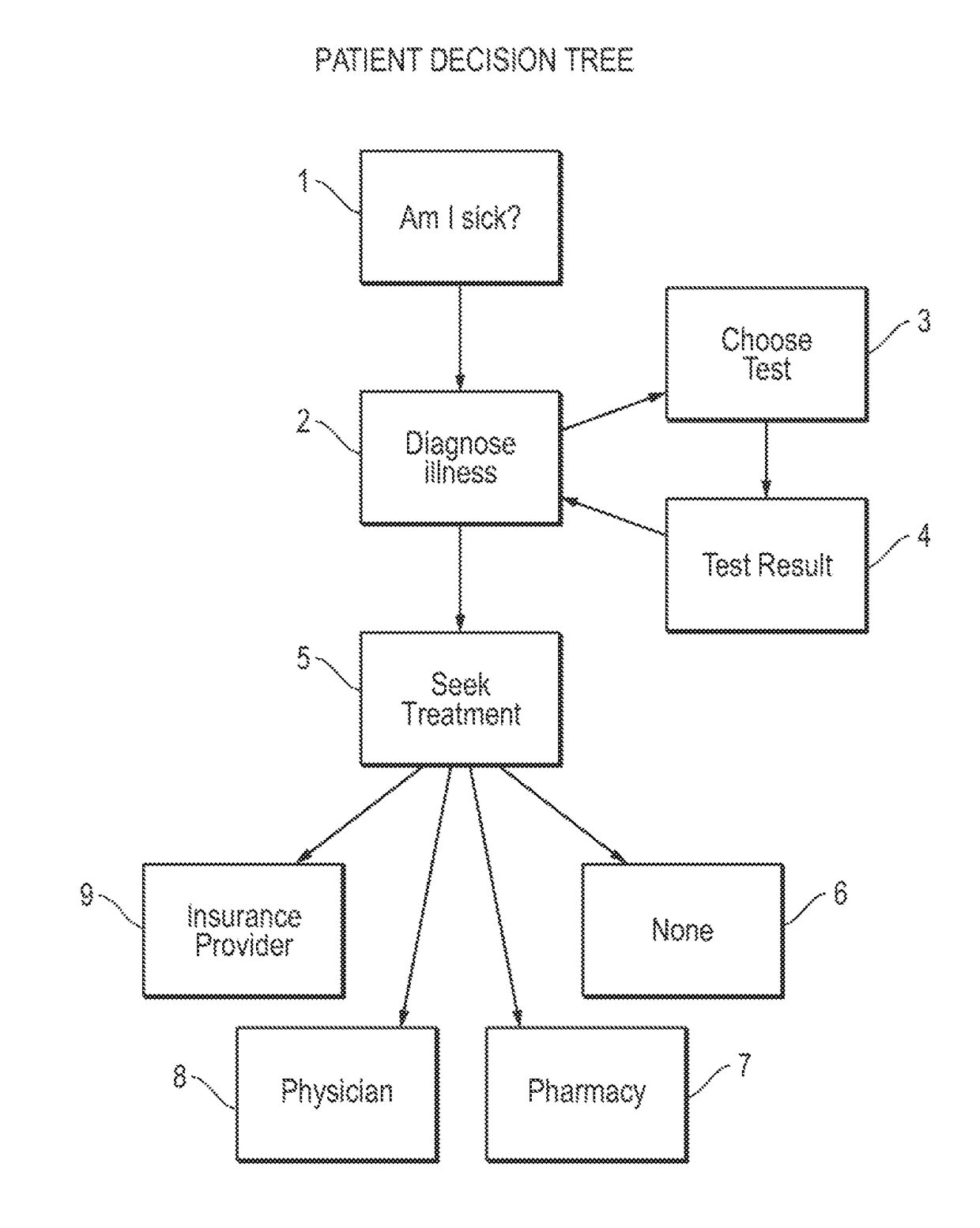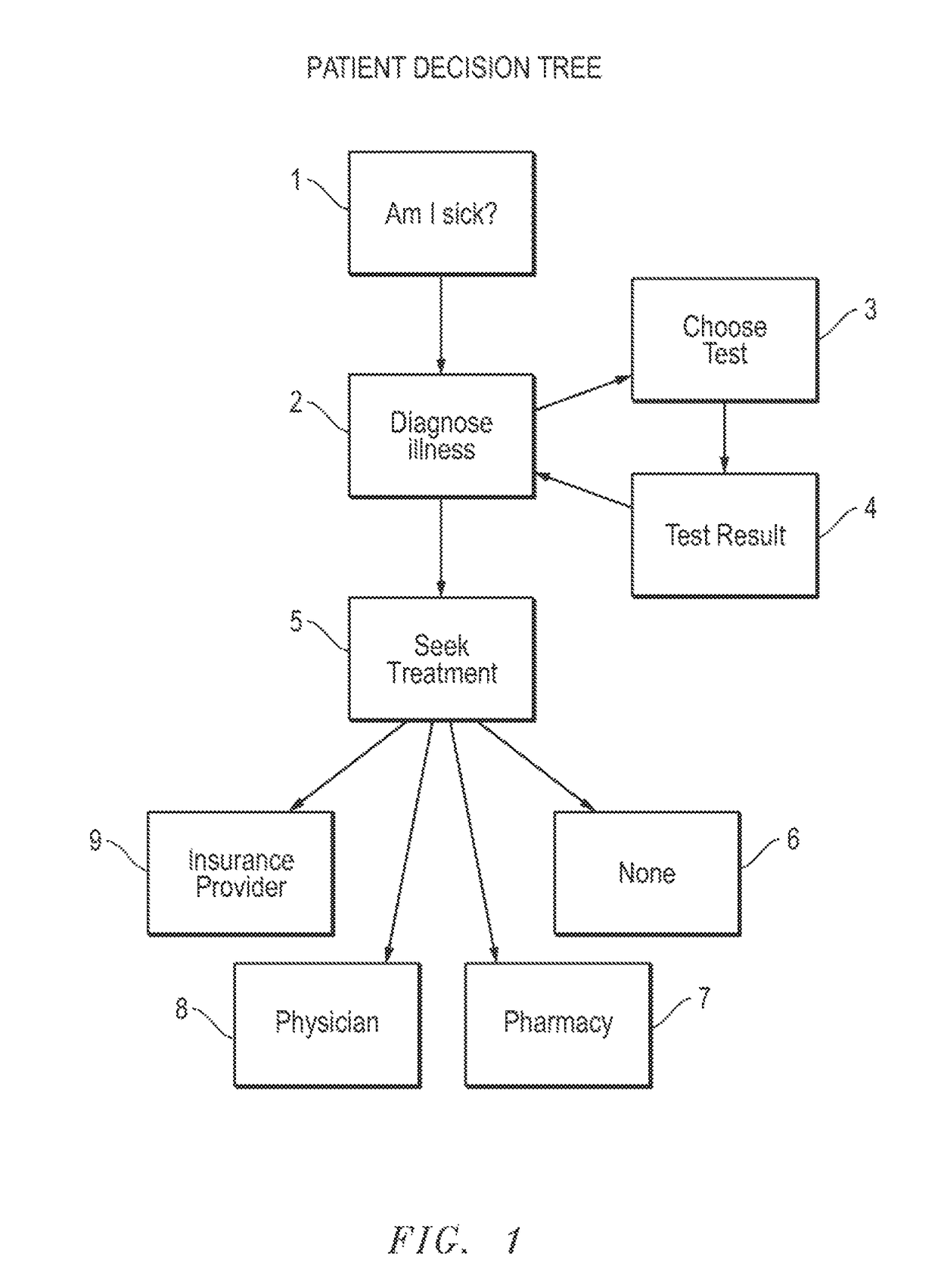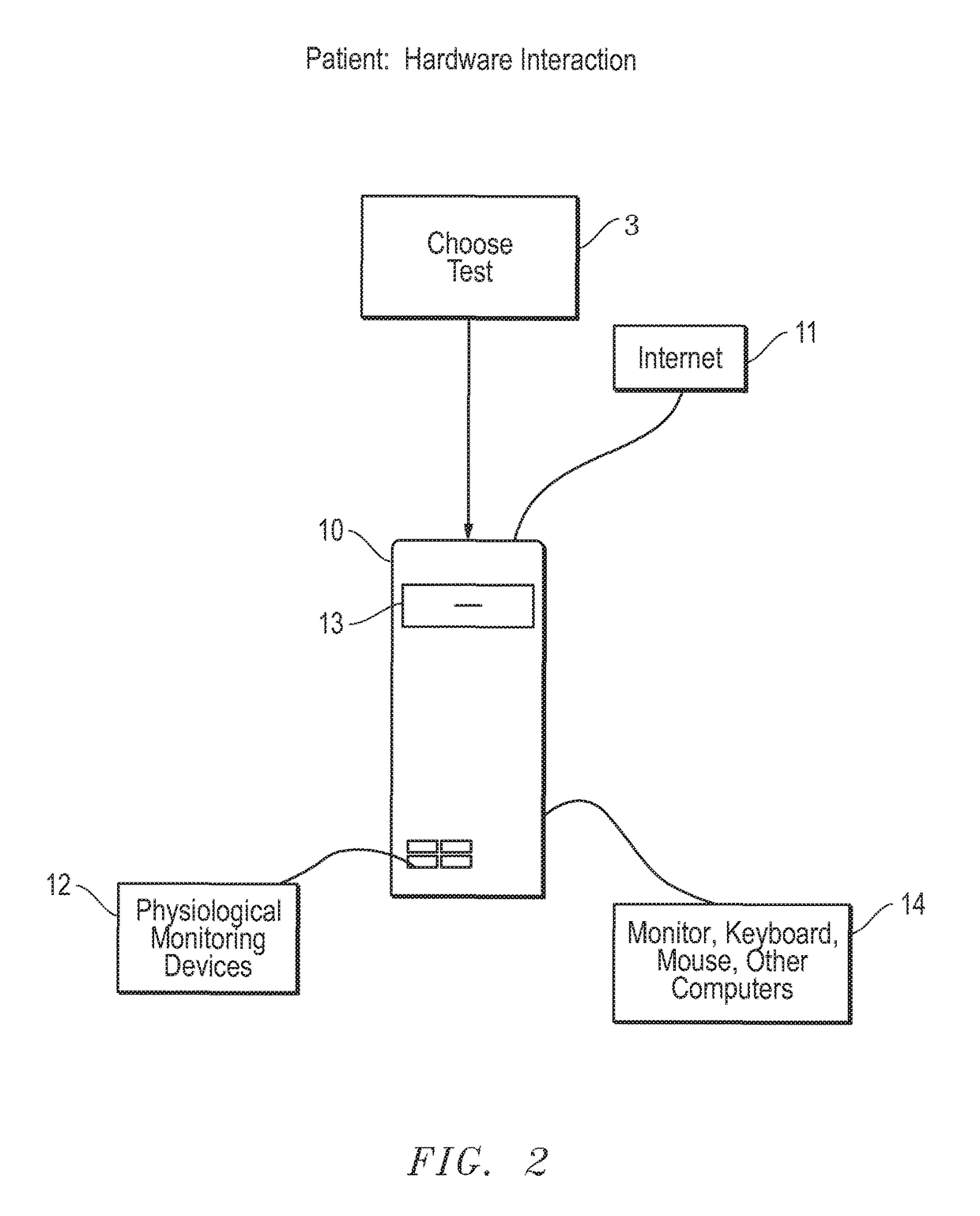Prior to the general availability of
the Internet, patients had to rely on limited medical resources.
The translation of
medical knowledge into a series of questions that can lead the patient into a diagnosis is cumbersome, impractical and fraught with error.
Often the listener is uncertain that the press 1 service is exactly what they are looking for, and may try another, ending up at an incorrect end-point.
Testing can be expensive because it includes the cost of the facilities to house the test and personnel, the cost of the instrument that conducts the tests, the government certification and compliant costs, the personnel costs to draw blood, personnel to maintain instruments, personnel to certify compliance, the cost of the test itself, and the administrative costs (e.g., computers, personnel, accounting, health care insurance, etc).
In addition to the issue of non-medical personnel reviewing records and photos, there is an issue of security where servers are broken into or files, taken home on laptops, are by third parties.
Health care costs continue to soar in
spite of newer technologies purporting to reduce cost; primary care providers cannot support the 300 million people in the United States, and the spill-over is disrupting emergency care facilities.
The medical paradigm of physician centric primary care is unable to sustain the quality of
patient care administered two decades ago.
The tradeoff is a considerably larger objective size, more optical elements in the objective, greater difficulty in assembling and aligning the optical elements, and the need to extend the
optical path beyond the objective, i.e., where an additional set of optical elements are required for
image formation.
Relying on the fixed coordinate approach to scan and tile slides is costly, cumbersome, and fraught with error.
Encoders are expensive and add complexity and points of failure.
Moreover, others have confused
encoder resolution with accuracy.
Moreover, the
absolute accuracy is only valid in a specific environment at a precise temperature.
Relying on encoders for abutting image tiles can lead to erroneous image results due to the absolute positional inaccuracy.
For example, if a specific lot of encoders is used for deriving a coordinate
system, and that lot is 3,000 nm longer than it should be, images collected and assembled based on that coordinate
system will be distorted; this could possibly misdirect a
clinical decision.
Encoders, in general, add cost to the
system, increase the degree of electrical and
software complexity increase
assembly and maintenance costs, and add another possible failure point.
Not only is this costly in time, but a typical
pathology laboratory would generate terabytes of useless data that federal law mandates must be properly stored for many years, backed up, and security maintained.
Superfluous images of
virtual microscope slides, as is seen in the prior art, unnecessarily displaces important information.
There is significant
programming and file overhead with the prior art coordinate based image tiling.
A header file is needed for coordinate translation, and if lost or corrupted,
image formation can fail.
Consequently,
rounding errors and offset error inaccuracies accumulate with every captured image.
The accumulated error distorts both column and row alignment of tiled images.
This method requires a more expensive camera because of the extra pixels required to overlap images.
Segmentation algorithms for calculating mal-alignment are inaccurate, slow, and computationally intensive.
And, preprocessing images to strip out unused pixels in overlapping area around the image periphery requires significant computation time thereby further slowing down storage.
However, such detection methods require a specific sequence of preparation that is beyond the training of the average person.
Automation comes at a substantial price:
capital equipment costs, federal regulatory certification costs, training costs, maintenance costs, and facilities costs.
Consequently, many diagnostic tests cannot be run in small laboratories, physician offices, or at patient homes.
This is especially true of PCR assays, where
processing errors are poorly tolerated and the
processing methods and temperatures are more complex.
Certain materials related to Delran and high molecular weight polypropylenes may reduce adherence but none eliminate adherence.
A washing step limits the use of many assays to skilled personnel.
Many assays require thermal management—especially PCR assays where thermal management is complex.
They can be heavy and costly, and they are not disposable.
This is one of the technical difficulties that has impeded the general introduction of
genetic testing.
Size, durability, and reliability are focus issues for
first responder emergencies e.g., anthrax release, bioterrorism, avian flu
pandemic, where assays need to be run immediately without prior training, or in difficult
terrain such as in a
cave, or in a situation where diverting attention to the
assay could prove deadly.
Without enabling information it is difficult to determine if it is even possible.
 Login to View More
Login to View More  Login to View More
Login to View More 


